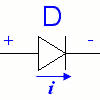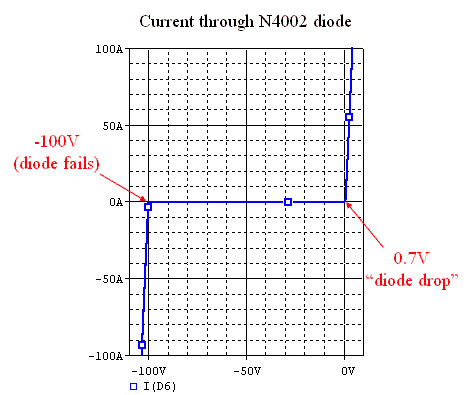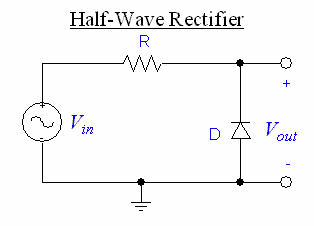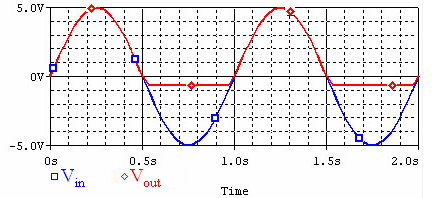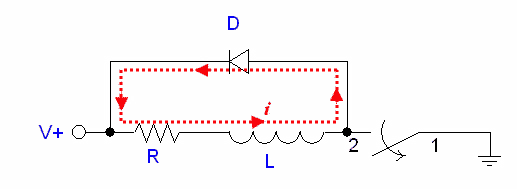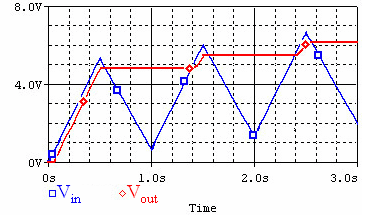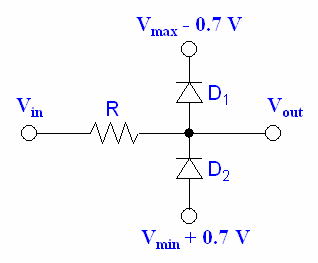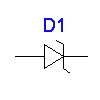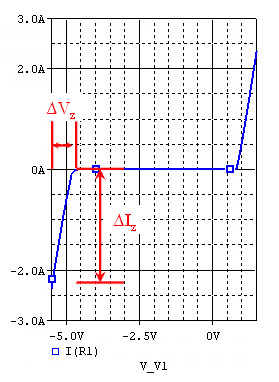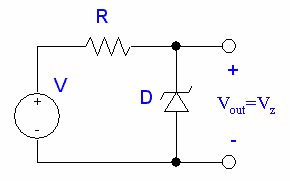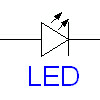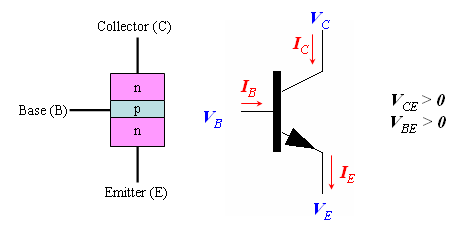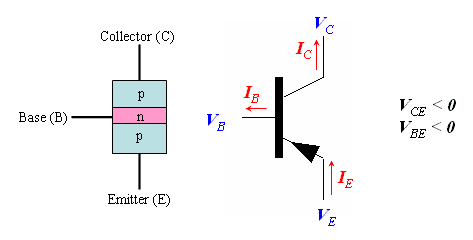Diodes and Transistors
Diodes
We can take advantage of the properties of a p-n junction to make a diode, which is an electrical component that only allows current flow in one direction. A diode made of silicon needs about 0.7V across it in order to conduct. At about -100V, the diode will fail and the current will force its way though. This is know as diode breakdown.
Applications of Diodes
Half-Wave Rectifier
A half-wave rectifier will cut off half of a sine wave, leaving only the positive or negative side.
The schematic for a simple rectifier:
The graph for half-wave rectifier:
Flyback Diode
An approximate model of a DC motor is a resistor and inductor in series. If we suddenly break the circuit to switch off the motor, the inductor will continue to try and push current though, resulting in a sudden spike in voltage (), damaging the switch or other electrical components. Mechanically, this is like trying to bring the velocity of a certain moving mass to zero, instantly. We can solve this problem by adding a diode, as shown:
This way, the current can flow through the diode and dissipate in the resistor. Yet, the diode prevents a short circuit from occurring when the switch is closed.
Peak Detector
We can make a peak detector if we hook up our circuit like this:
The graph of the input and output voltages looks like this:
Each time the input voltage dips, the diode prevents the capacitor from draining.
There are two problems with this circuit: First, the voltage of the peak must be greater than the voltage drop, or we won't detect anything. Second, the circuit has a very low impedance, and the capacitor drains a lot of current. A better peak detector can be built with op-amps.
Voltage Clamp
A voltage clamp will limit the output voltage, which is useful when we need to protect circuits from high voltages.
In this ciruit, if exceeds , the diode will conduct and force the voltage to stay at . At lower voltages, the diode does not conduct, and the voltage is not affected.
Zener Diodes
Zener diodes have a low breakdown voltage, or zener voltage, and can allow reverse current to flow without being destroyed. A good zener diode can also maintain a fairly constant voltage over a large range of currents. The voltage-current graph of a zener diode looks like this:
Voltage Regulator
We can use a zener diode to build a voltage regulator like this:
is the reverse breakdown or zener voltage.
Even if the current through the diode fluctuates, the voltage will remain fairly stable. Choose a resistance R large enough such that the power specs of the zener diode are not exceeded, but not so large that it limits our current too much.
For example, if our diode has a zener voltage of 5V and can handle 1W, and our voltage source has a maximum voltage of 20V:
The largest amount of current our diode will ever have to handle is the current through the diode when there is no external load. Therefore:
This means that we need at least 75Ω to protect our diode. Keep in mind that we must meet the power ratings for our resistor as well.
Because current is flowing through the resistor and diode even when there is no load, power is being wasted. We can do better with voltage regulator chips like a 7805 chip (78xx for xx volts).
LEDs (Light Emitting Diode)
And LED is a type of diode that emits visible or infrared light proportional to the current passing through it (up to a maximum before it burns out).
Bipolar Junction Transistors (BJT)
There are two types of of BJTs; n-p-n and p-n-p:
npn
pnp
